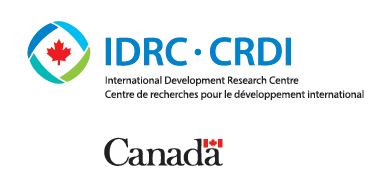By Uchenna Felicia Ugwu

Africa is becoming recognized as an important hub of informal innovation, which should not be excluded or ignored by formal systems for IP protection. This was highlighted when the members of the Canadian Association of African Studies (CAAS) gathered in Montreal in May to examine how originality and innovative practice could be reconceptualised to include innovation taking place in Africa.
Though participants at the conference agreed on the need to include Africa’s inventions in IP regulations, they seemed unsure as to the appropriate model by which to bring about this objective. I was honoured to be able to contribute to this discussion by presenting my paper, entitled “Redefining ‘Innovation’ in Multilateral IP Regulation to Advance Agricultural Invention: An African Perspective.”
The slides used in the presentation can be accessed here:
Innovation Occurs Through Differing Processes
Firstly, my paper examined the nature of innovation that dominates African subsistence agriculture and contrasted it with the formal inventions that are protected under IP systems. I found that African agricultural innovation often takes place in clusters that freely exchange ideas; local farmer-inventors imitate and copy products, then freely exchange seeds and knowledge of improved agricultural practices among each other. This contrasts with the forms of innovation protected under IP regulations that focus on exclusive private rights and companies as drivers of technological innovation.
In addition, my research found that agricultural innovation in African countries is mainly based on traditional knowledge. Traditional knowledge is the know-how, skills, and practices developed by indigenous and local communities that have been gained through experience and usually passed on orally. Traditional knowledge plays a dominant role in African inventions because for centuries subsistence farmers in Africa have observed, identified, selected, and refined desirable characteristics in plants for the purpose of improving agricultural production, taste, therapeutic purposes, and more.
The agricultural activities of farmers based on traditional knowledge are similar to the processes that are protected as “plant breeding” in IP law. The main difference is that innovation carried out by subsistence farmers remains largely undocumented, with knowledge of desirable genetic characteristics being transferred orally, and discoveries are not made in a scientific laboratory. This contrasts with modern day breeding, which takes place in laboratories, using technological equipment, with the results usually being documented on paper. Consequently, current forms of IP protection restrict and shut out the forms of informal innovation based on traditional knowledge that dominate African agriculture, especially in relation to food products.
Restrictive Definitions of Innovation in Multilateral IP Agreements
Secondly, my paper examined the requirements for ‘innovation’ under the UPOV and TRIPS Agreements. In order to qualify for intellectual property rights (IPRs) such as patents, a plant variety must be new, distinct, uniform, and stable. In my research, I found that the strict UPOV requirements for distinctiveness, uniformity, and stability are antithetical to the very nature of farmers’ varieties and landraces, many of which display genetic variability.[1] In this, Africa’s subsistence farmers and the international seed sector have highly divergent needs when it comes to supporting their innovations. IPRs are only unfortunately designed for the latter and not African subsistence farmers.
Principles for a More Inclusive Definition of ‘Innovation’
Thirdly, considering the unsuitability of current intellectual property (IP) norms for protecting informal innovation, often based on traditional knowledge, of the type that dominates African agriculture, my paper proposes an alternative framework for defining IP based on nine principles. This new framework would need to:
- Recognize innovation as a process, including informal innovation;
- Recognize open access and user innovation;
- Recognize traditional knowledge as a form of innovation;
- Recognize farmer’s rights as innovators and breeders;
- Promote sustainable innovation by developing local plant varieties;
- Recognize IP as a tool for advancing the public interest;
- Adopt a flexible definition of innovation to suit different contexts;
- Consider other multilateral agreements in defining innovation in IP regulations; and
- Adopt alternative metrics for measuring innovation.
Acknowledging innovation as a process, rather than just as resultant products, would allow IP regulations to recognize African farmers as participants in and contributors to innovation, rather than only as users of biotechnological products. This would lead to farmers being granted some form of proprietary rights to control the use and access of local plants and genetic resources developed from traditional knowledge.
Traditional plant varieties
and agricultural innovation in Africa will require designing sui generis models for IP protection and
developing metrics for assessing innovation that are not solely based on
economic factors. It is my hope that my research, and that of other Open AIR
scholars, will contribute to and play an important role in developing Afro-centred
innovation laws and policies. Indeed, such changes to the laws would help to
bring many communities, including Canadian indigenous groups, into the global
IP system in a practical way.
[1] M Kochupillai, Promoting Sustainable Innovations in Plant Varieties (Berlin: Springer-Verlag, 2016) at 235










